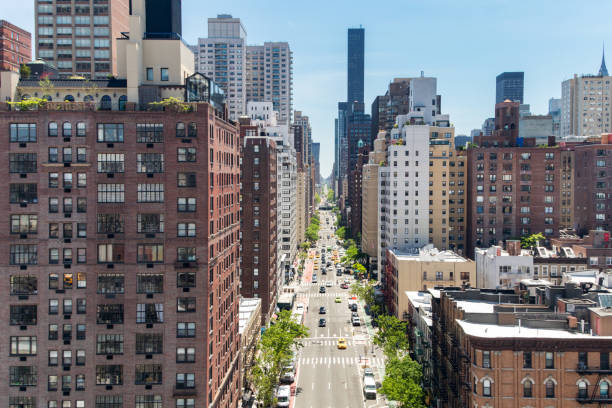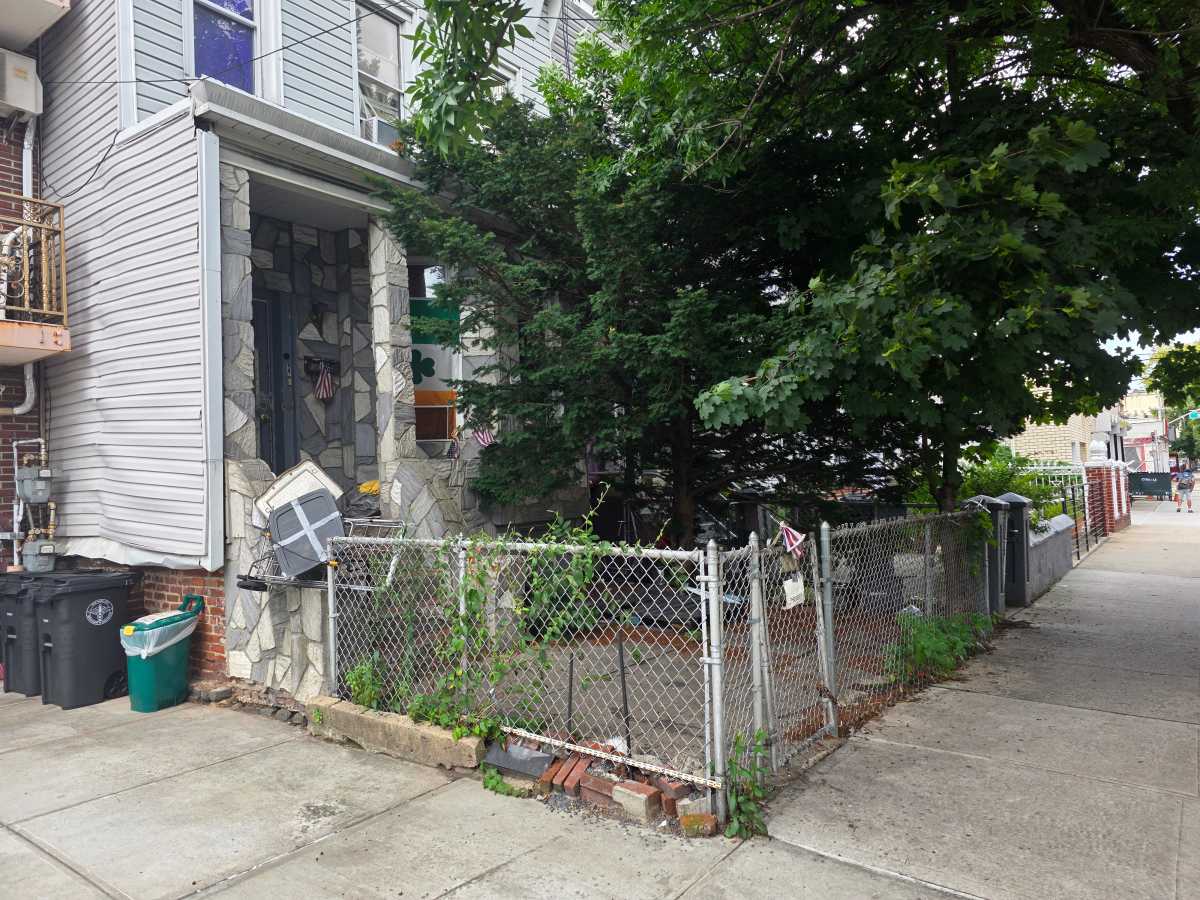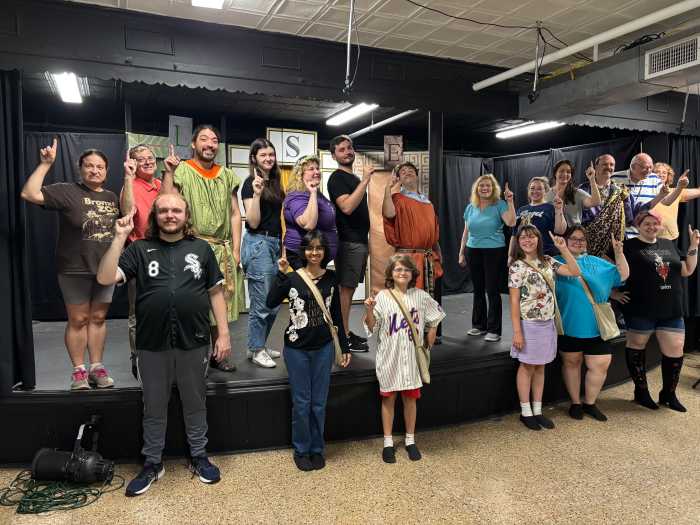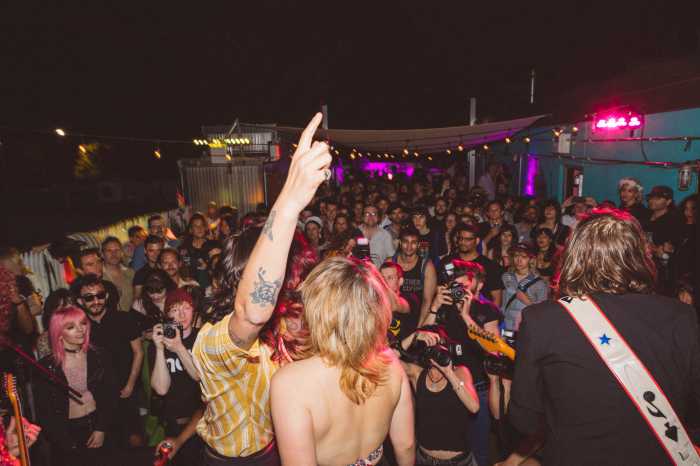By Lincoln Anderson
If it works once, why not try again?
Last month, demolition began on the four-story, red-brick Pathfinder building at Charles and West Sts., just south of the new Richard Meier-designed, twin luxury residential towers flanking Perry St. The new building is being designed by Meier and will likely be the same height and similar design as the existing buildings.
The development group is led by Stuart Marton and Izak Senbahar. Applications for a 16-story, 180-ft.-tall building with 31 apartments and 100,000 sq. ft. total were submitted to the Department of Buildings in May but were disapproved, though such applications are frequently disapproved on technicalities and resubmitted, said Sid Dinsay, a D.O.B. spokesperson.
The fast-disappearing Charles St. building was once home to Pathfinder, a socialist publishing company, and at another point, to a succession of gay bars. Glenn Bristow, a former Community Board 2 member, recalled a mural of revolutionary leaders on the building’s south side, which, she said, was blocked from view by a yellow wall put up a few years ago because a neighbor didn’t want to see it.
Lisetta Koe, a spokesperson for Richard Meier & Partners, said the project is still being designed and that it’s “really, really early” in the process, but it’s likely the building will be similar to the two already standing.
“Knowing the way that Richard works, he likes to keep things in context,” Koe said. “The top line will probably be the same” height as the existing buildings, she said.
Meier was part of the team that proposed a series of buildings shaped like a tick-tack-toe board for the World Trade Center site.
Meier’s Perry St. condominium towers, developed by Richard Born, were completed in June, but the apartments’ interiors are being finished, in most cases by the residents themselves, meaning it could be another year before most move in. Only about two apartments in each tower are occupied. Condo owners include Martha Stewart — according to Koe, despite rumors, Stewart didn’t flip her apartment — Calvin Klein, Nicole Kidman and Bill Joy, co-founder of Sun Microsystems and Java software developer.
Koe noted that having a new “private park” on the Hudson River is a big plus for the tenants.
“I don’t know if the tenants will use it, but it’s nice for them to be able to look at a nice landscaped park,” she said.
Plans for a restaurant by Jean-Georges Vongerichten in one of the towers are on hold, because “he’s been pretty busy,” Koe noted.
The new residential development is as-of-right, meaning no variance was necessary. A variance was needed further south at Morton St., where a 14-story, square-block, luxury project is rising in a manufacturing-zoned area. The community had fought this latter project and filed an Article 78 lawsuit against the city’s Board of Standards and Appeals for granting the variance, but the lawsuit was denied.
The Charles St. project is in an area unprotected by landmarking, west of the existing Greenwich Village Historic District and south of the newly designated Gansevoort Market Historic District.
In between the new Meier site and the southernmost of his two existing towers is Charles Lane, a historic, cobblestone street, though the cobblestones are fast becoming the street’s only historic element.
“It’s not landmarked,” Albert Bennett, of the Greenwich Village Community Task Force, said of the new site. “That means Charles Lane [will have] 16 stories on the south and 16 stories on the north.”
The Greenwich Village Community Task Force has pushed for the landmarking of the area along the waterfront, which it calls the “Maritime Mile.” But so far the city’s Landmarks Preservation Commission has not bitten.
Hoping to block further development, residents and Councilmember Chris Quinn recently fought off an attempt by the city to rezone a section of the northern part of Hudson Sq., between Barrow and Leroy Sts. and Hudson and West Sts., to allow residential development.
Andrew Berman, executive director of the Greenwich Village Society for Historic Preservation, said the society, even while focusing attention on the Meat Market designation, has tried to advocate for other at-risk parts of the Village and will continue to do so. The society recently completed a report on the importance of preserving neighborhoods on the edges of historic districts and how zoning can help, he noted.
Similarly, Katy Bordonaro, co-chairperson of the G.V. Community Task Force, said a wall of buildings on the waterfront would jeopardize the existing Greenwich Village Historic District.
“I think everybody in the Village is pretty solid with the idea of not walling off the Village,” she said. “We don’t want to create a wall along the river or along the edge of the existing historic district.”
On a recent Friday, Kaier Curtain, 65, was pointing out the new Meier tower to his cousin, Suzanne Bostick, 41, from Connecticut, as they were standing on the traffic median on West St. as cars whooshed by noisily. Things had changed a lot along the waterfront since Curtain, an authority on gay theater, lived in the Village in the 1960s. He recalled when the Village waterfront “was rough gay bars. It was like leather bars and motorcycles, very tough [lesbians].” And there was the cruising seen on the dilapidated piers.
But now he looked across to the park, which they had just toured, where a waterfall gurgled tranquilly at Christopher St. in the late afternoon’s golden rays of sun.
“In the next five years, this’ll all be expensive apartments,” he predicted. “It’s amazing how fast this has gone up,” he said of the park.
Lincoln@DowntownExpress.com
Reader Services




























